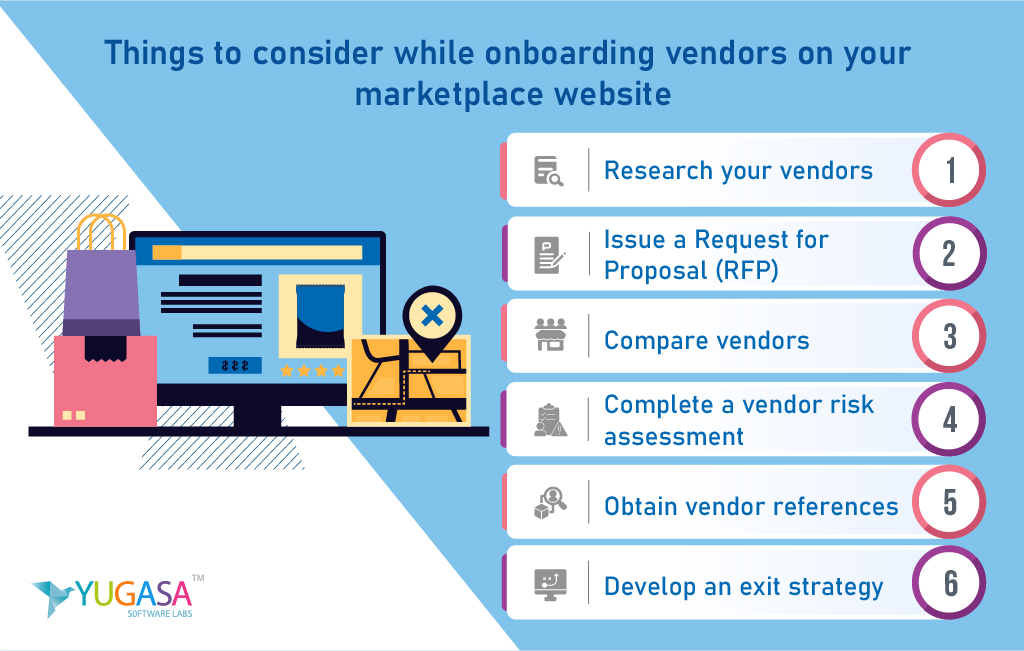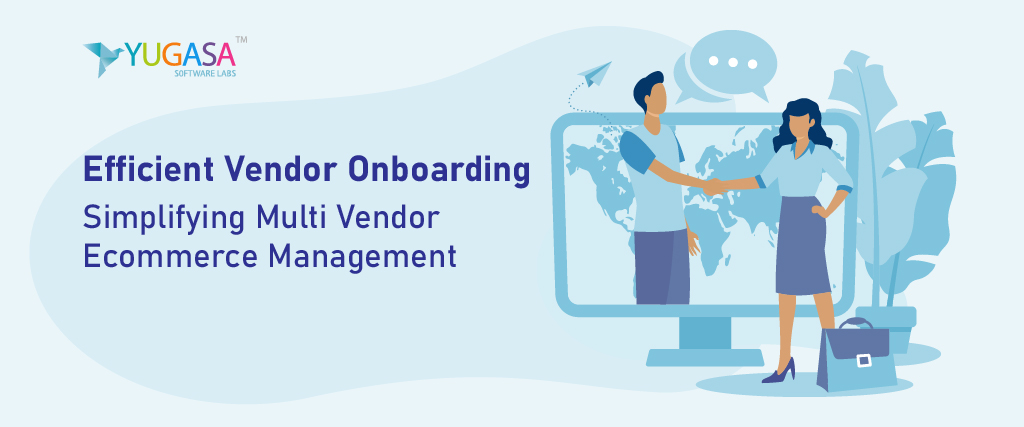The emergence of multi-vendor platforms in the constantly changing e-commerce industry has completely changed how customers purchase online.
With so many products available from different sellers on these platforms, buyers have more options and sellers may reach a wider market.
On the other hand, handling numerous vendors on an e-commerce platform presents a unique set of difficulties, especially with vendor onboarding.
This blog will discuss the value of effective vendor onboarding and methods for streamlining the administration of multi-vendor e-commerce.

The Importance of Efficient Vendor Onboarding
A multi-vendor e-commerce platform’s success depends on effective vendor onboarding for several reasons.
● Streamlined Operations: When vendors are properly onboarded, the platform’s policies, procedures, and requirements are understood, which promotes smoother operations and fewer errors.
● Quicker Time-to-Market: By enabling new vendors to begin selling on the platform sooner, rapid and effective onboarding expands the platform’s product offerings and draws in additional clients.
● Better Vendor Relationships: More cooperation, trust, and collaboration can result from improved vendor relationships, which can be fostered via a great onboarding process.
● Improved Customer Experience: Customers will locate what they need more quickly and with greater satisfaction and loyalty when there is a wide variety of products available from several providers.
Strategies for Efficient Vendor Onboarding
A multi-vendor e-commerce platform’s success depends on effective vendor onboarding.
The following are some detailed tactics to help the vendor onboarding process run more smoothly:
Clearly defined rules and documentation:
Give vendors thorough paperwork that details the needs, platform policies, and onboarding procedure.
Everything from registration procedures to product listing criteria and performance indicators should be covered in this handbook.
Having precise and comprehensive rules lowers the possibility of miscommunications or mistakes during the onboarding process and helps vendors understand what is expected of them.
Automated Workflows for Onboarding:
To expedite the onboarding process and reduce manual intervention, implement automated procedures and systems.
Automate procedures like document verification, account setup, and product listing approval by utilizing technology solutions like vendor management systems (VMS) or customer relationship management (CRM) software.
In addition to saving time for platform administrators and vendors, automated workflows also guarantee correctness and consistency in the onboarding procedure.
Portals for self-service onboarding:
Establish self-service portals so that suppliers can independently register, provide the necessary paperwork, and set up their accounts.
These portals ought to provide vendors with step-by-step guidance through the onboarding process using an intuitive navigation system and user-friendly design.
Vendors can take charge of their onboarding process with the use of self-service portals, which relieves platform administrators of some of their workload and speeds up new vendors’ time to market.
Tailored Assistance and Instruction:
Provide new vendors with individualized guidance and instruction to ensure a smooth onboarding process.
To address the unique demands and concerns of vendors, provide tools including webinars, tutorials, and one-on-one coaching sessions.
Design training courses that address things like price tactics, marketing strategies, platform features, and product listing optimization.
As vendors join the platform, they may feel secure and supported thanks to individualized support and training.
Things to consider while onboarding vendors on your marketplace website

Research your vendors:
Before onboarding vendors onto your marketplace website, thoroughly research potential candidates.
Consider factors such as their reputation, reliability, product quality, pricing, and compatibility with your marketplace’s brand and values.
Issue a Request for Proposal (RFP):
Create a detailed RFP outlining your requirements, expectations, and evaluation criteria for potential vendors.
This helps standardize the selection process and ensures that vendors understand what is expected of them.
Compare vendors:
Once you receive proposals from vendors in response to your RFP, carefully compare them.
Evaluate each vendor based on criteria such as pricing, product quality, delivery times, customer service, and any additional features or benefits they offer.
Complete a vendor risk assessment:
Assess the risks associated with each vendor before finalizing any agreements.
Consider factors such as financial stability, compliance with regulations, cybersecurity measures, and any potential legal or reputational risks they may pose to your marketplace.
Obtain vendor references:
Request references from each vendor to gain insight into their track record and reputation from past clients or partners.
Contact these references to verify the vendor’s claims and ensure they have a positive reputation for reliability and quality.
Develop an exit strategy:
Plan for the possibility of ending partnerships with vendors if necessary.
Establish clear terms and conditions regarding contract termination, including any penalties or procedures for transitioning to new vendors.
Having an exit strategy in place can help mitigate risks and ensure a smooth transition if the need arises.
FAQs
How can vendors track the status of their onboarding applications?
Platforms need to provide vendors with a variety of ways to get help if they run across problems throughout the onboarding process.
This could include phone assistance, live chat, email help, and having a dedicated support staff at your disposal.
What support and resources are available to vendors during the onboarding process?
Vendors can usually begin selling on the platform right away after completing the onboarding procedure and having their accounts approved.
Before their product listings are published, they might need to make sure that they abide by the rules and norms of the platform.
How can vendors get help if they encounter issues during onboarding?
Platforms need to provide vendors with a variety of ways to get help if they run across problems throughout the onboarding process.
This could include phone assistance, live chat, email help, and having a dedicated support staff at your disposal.
Can vendors start selling immediately after completing the onboarding process?
Vendors can usually begin selling on the platform right away after completing the onboarding procedure and having their accounts approved.
Before their product listings are published, they might need to make sure that they abide by the rules and norms of the platform.
Conclusions
E-commerce platforms may establish a solid basis for long-term success and growth, expedite the vendor onboarding process, and improve the experience of new suppliers by putting these methods into practice.
In addition to helping suppliers, effective vendor onboarding increases the platform’s profitability and competitiveness in the market.
Start putting these methods into practice right now if you’re prepared to maximize your vendor onboarding procedure and unleash the full power of your multi-vendor e-commerce platform!
























